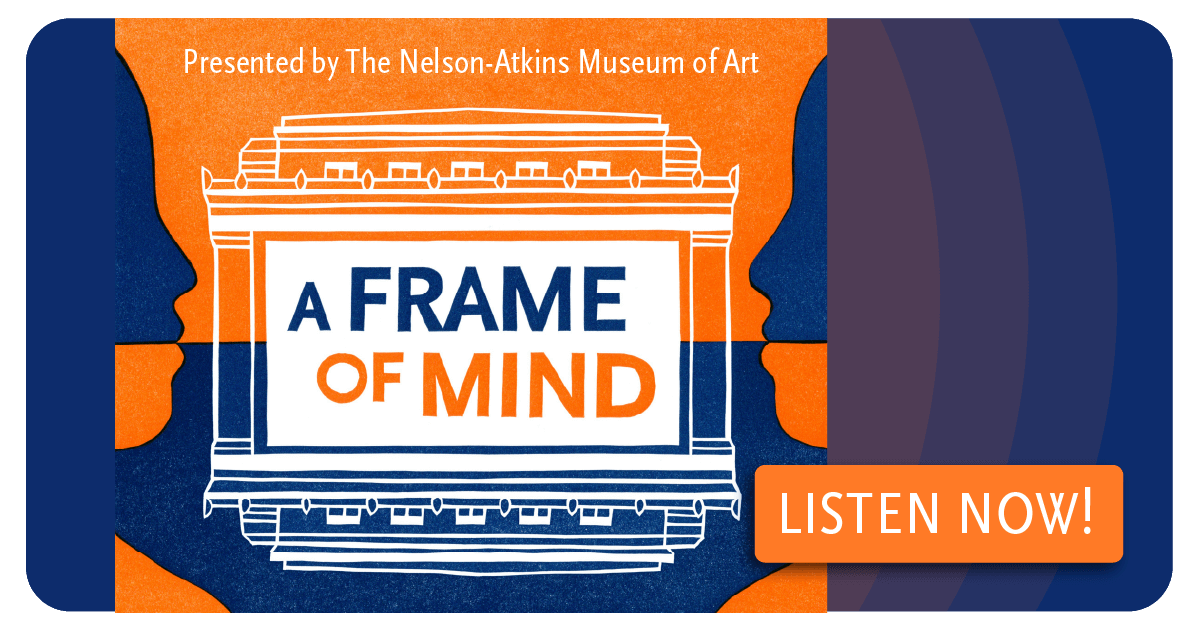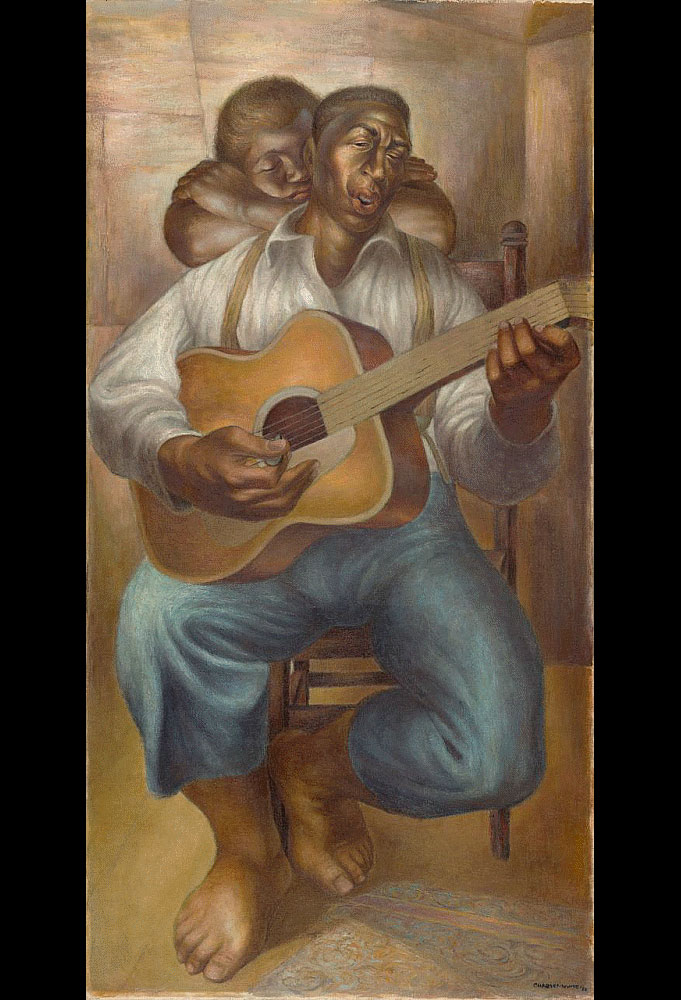- Podcast
- Smartify
- Featured Audio Tour
- Art Insights
- Sound Inspired by Visual Art
- Visual Art Inspired by Sound
Uncover the stories about works of art in the Nelson-Atkins collection. Take an audio or American Sign Language tour on the Smartify app, explore how visual artists and musicians inspire each other, and get lost in a podcast on all the ways to see variations of love in works of art.
Podcast
A Frame of Mind is the podcast of The Nelson-Atkins Museum of Art that discusses the slow and sometimes messy change of a big museum asking what it can be and whose stories it tells.
There are as many kinds of love as there are hearts in the world. Walk through the galleries with writer Christine Murray as she muses on variations of love and how she sees it expressed in works of art. See the early days of love, love of a place or thing you do, the quiet beauty of ordinary moments, the power of all-consuming love, and the downfall of heartbreak.
For a more immersive online experience, try listening to the first seven tracks of this podcast while exploring the Bloch Galleries in Google Street View.
Smartify
Explore our collection and be your own museum guide from anywhere through the Smartify app. Look for audio and American Sign Language tours.
- Step 1: Download the app onto your iPhone or iPad or Android or Pixel.
- Step 2: Open Smartify, then search for The Nelson-Atkins Museum of Art
- Step 3: Choose a tour or browse our collection at your own pace

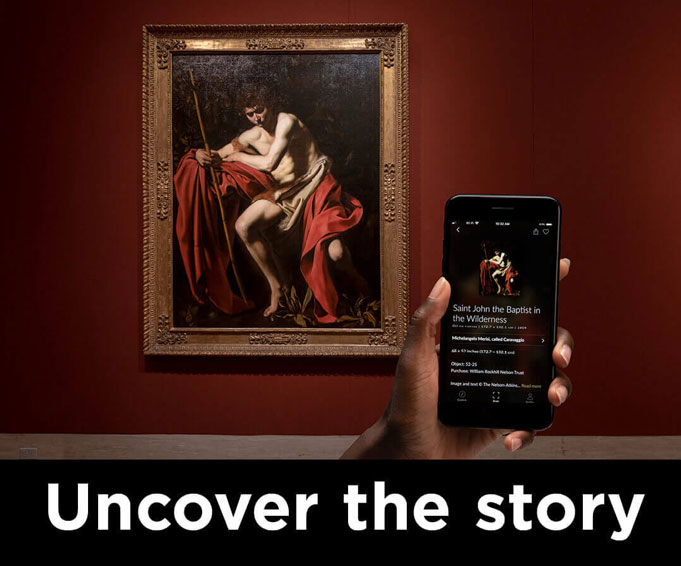
Featured Audio Tour Come Closer
Listen in on conversations between curators, conservators, and educators. Use all your senses to get up close and personal with works of art and jump into their worlds. Explore ways of looking that you can try in any gallery in the Nelson-Atkins.
You can experience this in person by visiting us on the second floor of the Nelson-Atkins building. The tour starts in room 215 of the American galleries.
Art Insights
With Smartify, you can also find new insights about works of art from curators, artists, and community members. Here is a sample of what you can discover on the app:
LION
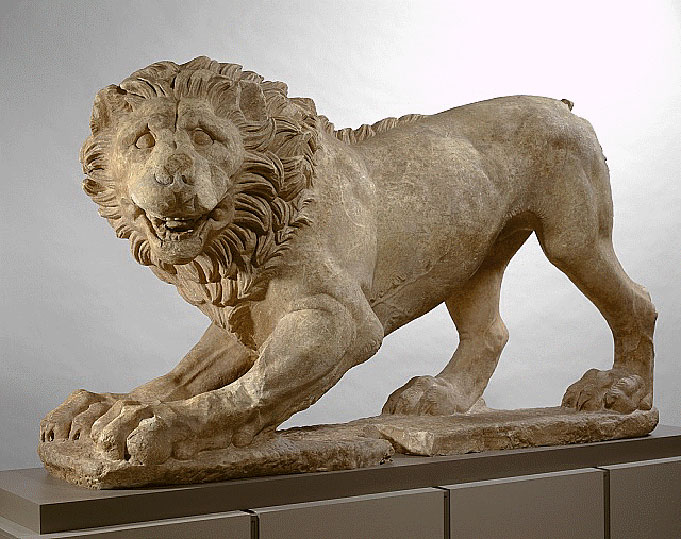
Lion, Greek, Madhya Pradesh, Malwa, Paramara Dynasty, about 325 B.C.E. Pentelic marble, 44 ½ x 80 ½ x 22 ¾ inches. Purchase: William Rockhill Nelson Trust, 33-94.
JAR
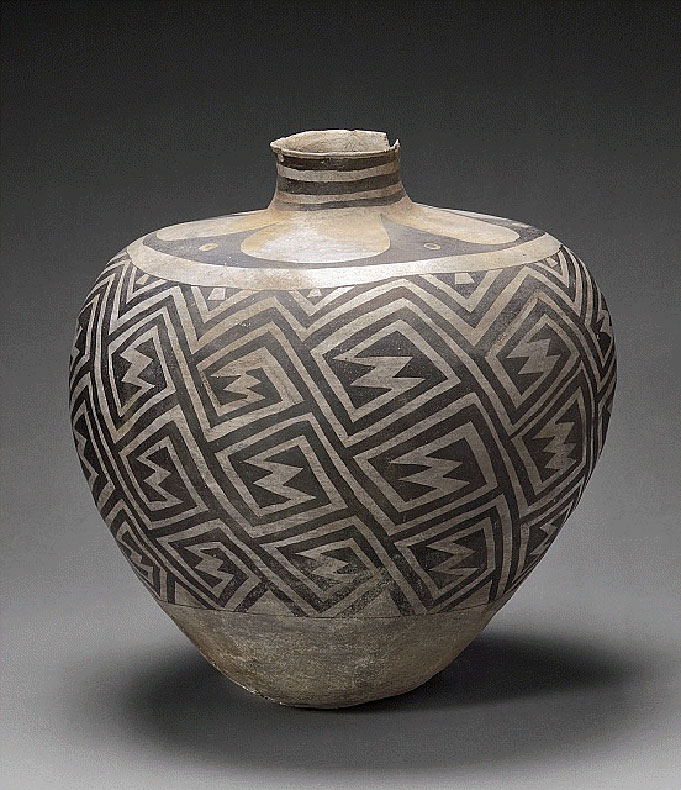
Jar, Ancestral Pueblo (also known as Anasazi), New Mexico, 1000-1300. Clay and pigment, 19 x 18 ¾ inches. Purchase: acquired through the generosity of Mr. and Mrs. Henry I. Marder, F88-10.
KAMADENHU the WISH-GRANTING COW
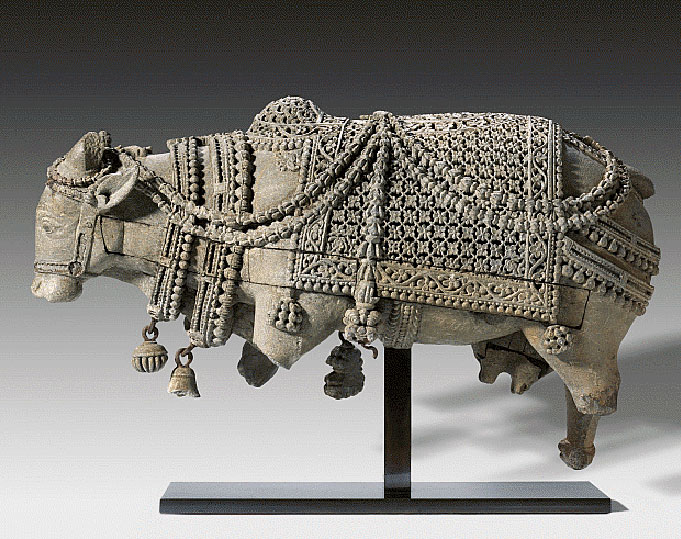
Kamadenhu the Wish-Granting Cow,South Indian (possibly Karnataka), 1400-1600s. Stone and pigments with metal attachments, 24 ½ x 23 x 8 inches. Purchase: William Rockhill Nelson Trust through the George H. and Elizabeth O. Davis Fund, 2009.15.
THE TEMPTATION OF SAINT ANTHONY
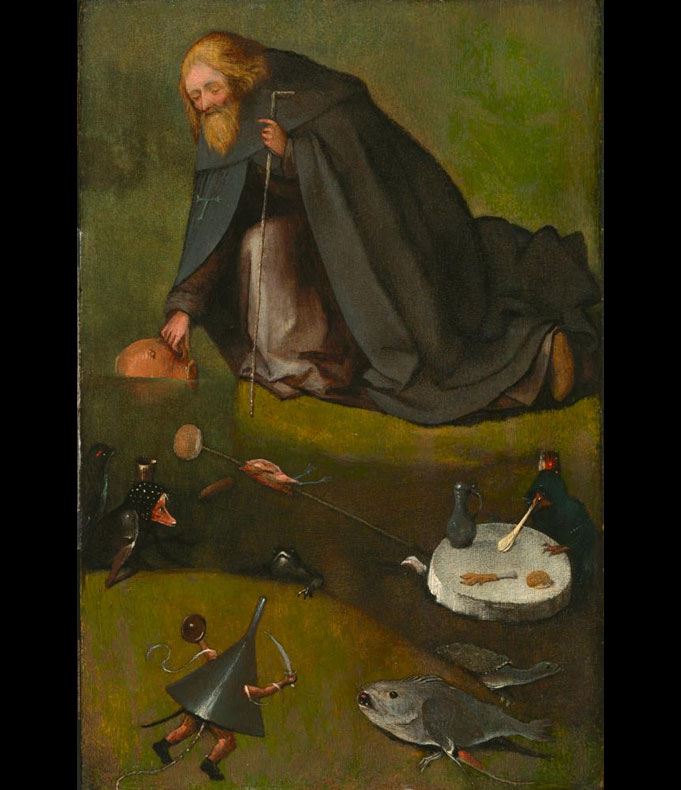
Hieronymus Bosch, Netherlandish (about 1450-1516). The Temptation of Saint Anthony, about 1500-1510. Oil on panel, 15 3/16 x 10 inches. Purchase: William Rockhill Nelson Trust, 35-22.
Sound Inspired by Visual Art
Visual art and music share some common building blocks: composition, rhythm, harmony, dissonance, texture, and form. So it’s not surprising that composers may find inspiration in visual art and vice versa. Below, listen to and look at works in the Nelson-Atkins collection that inspired sound.
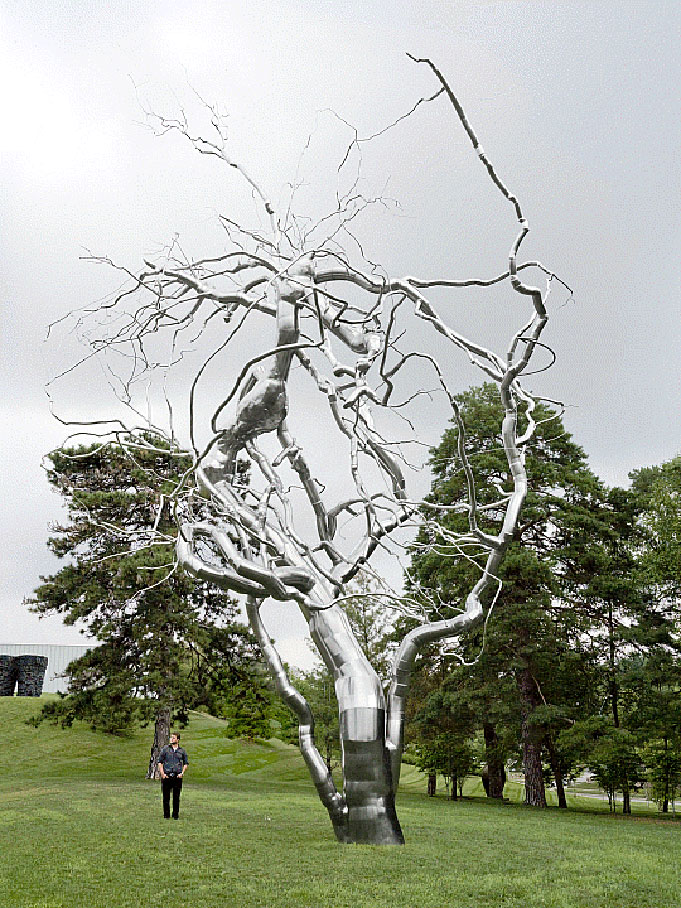
Roxy Paine, American (born 1966). Ferment, 2011. Stainless steel, 56 x 35 feet. Purchase: acquired in honor of Martin Friedman and his critical role in the development of the Kansas City Sculpture Park through a gift from the Hall Family Foundation, 2011.1. © Roxy Paine
Christina Butera, Broken, 2018. Performed by Elisabeth Stimpert.
Mara Gibson, Canopy, 2017. Performed by Michael Hall.
Paul Rudy composed this piece in response to Bart Michiels’s large-scale photograph of the land where 700,000 people died, were wounded, or were reported missing during the Battle of Verdun in World War I. What echoes and landscapes do you hear in Rudy’s piece?
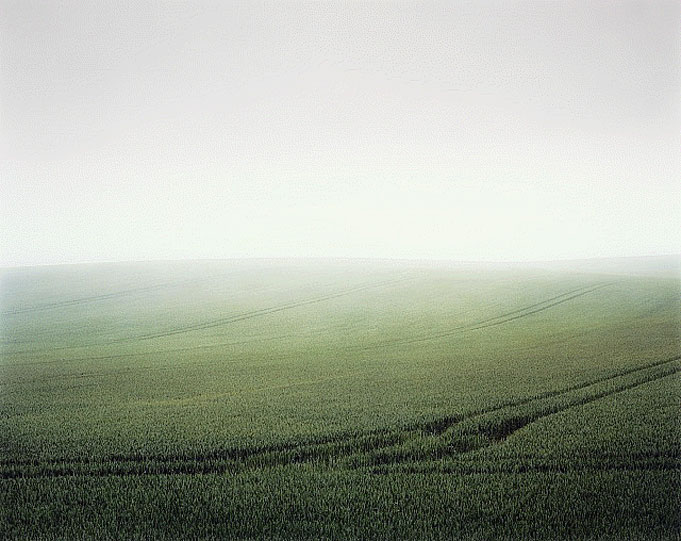
Bart Michiels, Verdun 1916, Le Mort Homme, 2001. Chromogenic print. Image: 60 x 72 inches. Gift of the Hall Family Foundation, 2007.21.2
Paul Rudy, Verdun, 2008.
Visual Art Inspired by Sound
This photograph of jazz saxophonist John Coltrane by Roy DeCarava is part of a series focused on jazz musicians, eventually published in a book called the sound i saw. How does the photograph capture and translate Coltrane’s sounds?
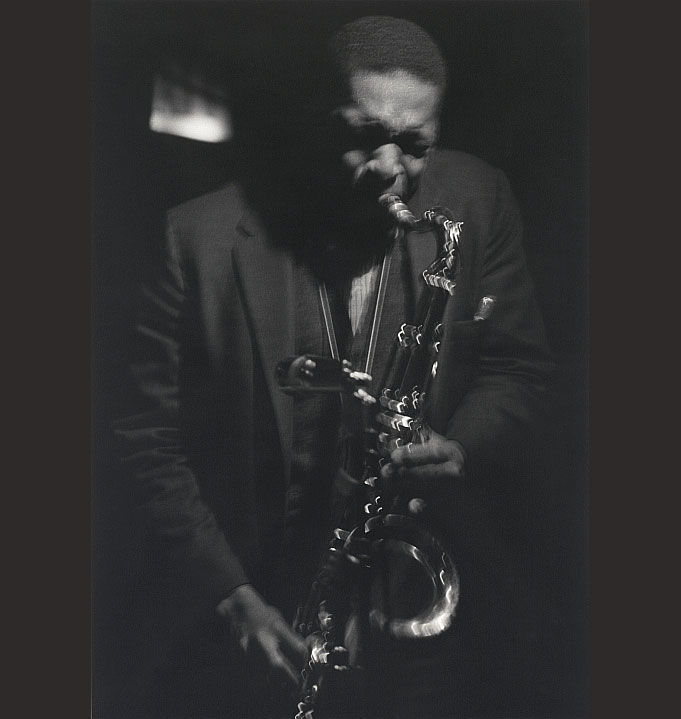
Roy DeCarava, American (1919-2009). Coltrane No.24, 1963; printed ca. 1984. Gelatin silver print. Gift of Hallmark Cards, Inc., 2005.27.3968.
John Coltrane, Blue Train, 1958 (remastered 2003).
The man who plays the guitar and sings in Charles Wilbert White’s painting is Huddie “Lead Belly” Ledbetter, a legendary musician who lived from 1888 to 1949. White painted this portrait three years after Lead Belly passed away and titled it after his famous song, “Goodnight Irene.” As you listen to Lead Belly perform “Goodnight Irene,” what new details do you see and wonder about in this painting?

